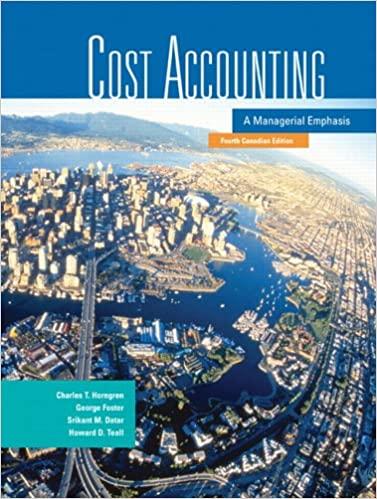Problem 7A-5 (Algo) Time-Driven Activity-Based Costing (L07-6, L07-7) Athens Company is conducting a time-driven activity-based costing study in its Engineering Department. To ald the study, the company provided the following data regarding its Engineering Department and the customers served by the department: Number of employees Average salary per employee Weeks of employment per year Bours worked per week Practical capacity percentage 10 $84.000 52 40 85 Now Product Design 40 Engineering Change Orders 20 Product Testing Bourn per unit of the activity Customer Customer c Number of new products designed Number of engineering change orders Number of products tested Customer 3 6 21 All Customers 185 255 165 9 Required: 1. Using the customer cost analysis as demonstrated in Exhibit 7A-2.compute the following: a. The cost per hour of the resource supplied in the Engineering Department. b. The time-driven activity rate per hour for each of Athens three activities. c. The total engineering costs consumed by Customer A, Customer B. and Customer 2. Using the capacity analysis as demonstrated In Exhibit 7A-3, compute the following: a. The used capacity in hours. b. The unused capacity in hours. c. The unused capacity in number of employees. d. The Impact on expenses of matching capacity with demand. 3. Assume that Athens is considering expanding its business such that the estimated number of new products designed would increase to 255, the number of engineering change orders would jump to 325, and the number of products tested would rise to 245 Using these revised figures, calculate the following: 0. The used capacity in hours. b. The unused capacity in hours. c. The unused capacity in number of employees. d. The impact on expenses of matching capacity with demand. Required 1 Required 2 Required 3 1. Compute the following: a. The cost per hour of the resource supplied in the Engineering Department. (Round your answer to two decimal places.) b. The time-driven activity rate per hour for each of Athens' three activities. (Do not round Intermediate calculations.) c. The total engineering costs consumed by Customer A, Customer B, and Customer C. (Do not round Intermediate calculations.) (For all requirements, round your answers to 2 decimal places.) Show less 47.51 a. Cost per hour of the resource supplied 6. Time-driven activity rate: New Product Design Engineering Change Orders Product Testing c Total engineering labor costs assigned to: Customer A Customer B Customer C Required 1 Required 2 Required 3 2. Compute the following: a. The used capacity in hours. b. The unused capacity in hours. c. The unused capacity in number of employees. (Round your answer to 2 decimal places.) d. The impact on expenses of matching capacity with demand. (Be sure to round down your potential adjustment in the number of employees to a whole number. Negative amounts should be indicated by a minus sign.) Show less a. Engineering hours used to meet demand b. Unused capacity in hours c. Unused capacity in number of employees d. Impact on expenses of matching capacity with demand wym w In www Required 1 Required 2 Required 3 3. Assume that Athens is considering expanding its business such that the estimated number of new products designed would Increase to 255, the number of engineering change orders would jump to 325, and the number of products tested would rise to 245. Using these revised figures, calculate the following: 0. The used capacity in hours. b. The unused capacity in hours. (Negative amounts should be indicated by a minus sign.) c. The unused capacity in number of employees. (Round your answer to 2 decimal places and Negative amounts should be Indicated by a minus sign.) d. The Impact on expenses of matching capacity with demand. (Round down your potential adjustment in the number of employees to a whole number.) Show less a. The used capacity in hours b. The unused capacity in hours c. Unused capacity in number of employees d. Impact on expenses of matching capacity with demand











